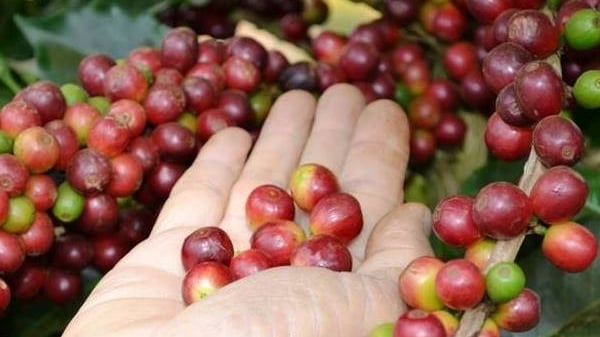June 17, 2025 | 01:08 GMT +7
June 17, 2025 | 01:08 GMT +7
Hotline: 0913.378.918
June 17, 2025 | 01:08 GMT +7
Hotline: 0913.378.918

Update on the latest coffee market price on 06/13/2023
Coffee prices on June 13 in the world market simultaneously decreased at both major exchanges.
At the time of the survey, the price of Robusta coffee on the London exchange for delivery in July 2023 decreased by $22/ton (equivalent to 0.81%); to $2,706/ton.
And the price of coffee delivered in September 2023 on this exchange decreased by $21/ton (equivalent to 0.78%), at $2,681/ton.
And the price of Arabica coffee on the New York exchange delivered in July 2023 fell sharply from 5.10 cents/lb (equivalent to 2.68%) to 185.55 cents/lb.
For the delivery term in September 2023, the price of coffee on this exchange dropped sharply by 5.15 cents/lb (equivalent to 2.75%); to 181.50 cents/lb.

Latest coffee prices on New York and London exchanges
The world coffee price today is plummeting by over 2.6% on the New York exchange but only down less than 0.9% on the London exchange.
The dollar rose as investors awaited inflation data and the US interest rate meeting to be released this week. And this has had a negative impact on the price of Arabica coffee.
The price of Robusta coffee is on a downward trend because it is deep in the overbought zone and is under pressure from the rising USD.
However, according to the assessment, the market still has concerns about supply shortage with reports that inventories on the exchange continue to decline. Last week, the price of green beans in Vietnam's domestic market set an all-time high.
The extreme weather caused by El Nino raised concerns that Robusta coffee beans from major producers such as Vietnam and Indonesia would be affected, leading to skyrocketing prices. El Nino is associated with below-average rainfall and higher temperatures, both of which reduce coffee production.
Analysts say the US Department of Agriculture (USDA) forecasts that the world's robusta production will fall by about a fifth.
Thus, the price of coffee on 06/13/2023 in the world market simultaneously decreased compared to yesterday.
Coffee price on June 13 in the domestic market decreased slightly by VND 400/kg compared to yesterday.
Specifically, the price of Lam Dong coffee (in 3 districts of Di Linh, Bao Loc and Lam Ha) is currently being purchased at VND 64,000/kg.
In Cu M'gar district (Dak Lak), the price of coffee today remained at VND 64,600/kg. In Ea H'leo and Buon Ho districts, today's coffee price in Dak Lak is at VND 64,500/kg.
Coffee prices in Gia Nghia and Dak R'lap of Dak Nong province today were purchased at VND 64,700 and VND 64,600/kg, respectively.
In Gia Lai, the price of coffee in Chu Prong today is at VND 64,200/kg; while the price at Pleiku and La Grai are holding at VND 64,100/kg.
The price of coffee today in Kon Tum is being purchased at VND 64,200/kg.
Coffee prices in the country today decreased slightly. And this has made the domestic coffee market unable to keep the threshold of VND 65,000/kg.
Thus, the price of coffee on 06/13/2023 in the domestic market traded around the threshold of VND 64,000 - 64,700/kg.
$1 = VND 23,290.00 - Source: Vietcombank
Translated by Hoang Duy

(VAN) Japan will release another 200,000 metric tons of rice from its emergency stockpile to tackle a doubling of prices since last year, Agriculture Minister Shinjiro Koizumi said on Tuesday.

(VAN) Coffee prices on June 13 declined sharply for Arabica. Domestic coffee market in Vietnam dropped by VND 2,000, trading at VND 111,500 – 112,300/kg.

(VAN) Coffee prices on June 12, 2025, continued to fall. Domestically, coffee prices decreased by another VND 2,000, trading at VND 111,500 – 112,300/kg.

(VAN) Coffee prices on June 11, 2025, fell sharply across global markets. Domestic coffee market dropped by VND 700, to the range of VND 113,500 – 114,300/kg.

(VAN) Coffee prices on June 10 2025, rose sharply worldwide for Robusta. Domestic coffee market increased by VND 800, reaching VND 114,200 – 114,800/kg.

(VAN) New FAO forecasts point to record global cereal output with a partial rebound in stocks and trade.

(VAN) Coffee prices on June 9, 2025, in domestic and global markets remain unchanged. Domestic coffee market is currently trading at VND 113,500 – 114,000/kg.